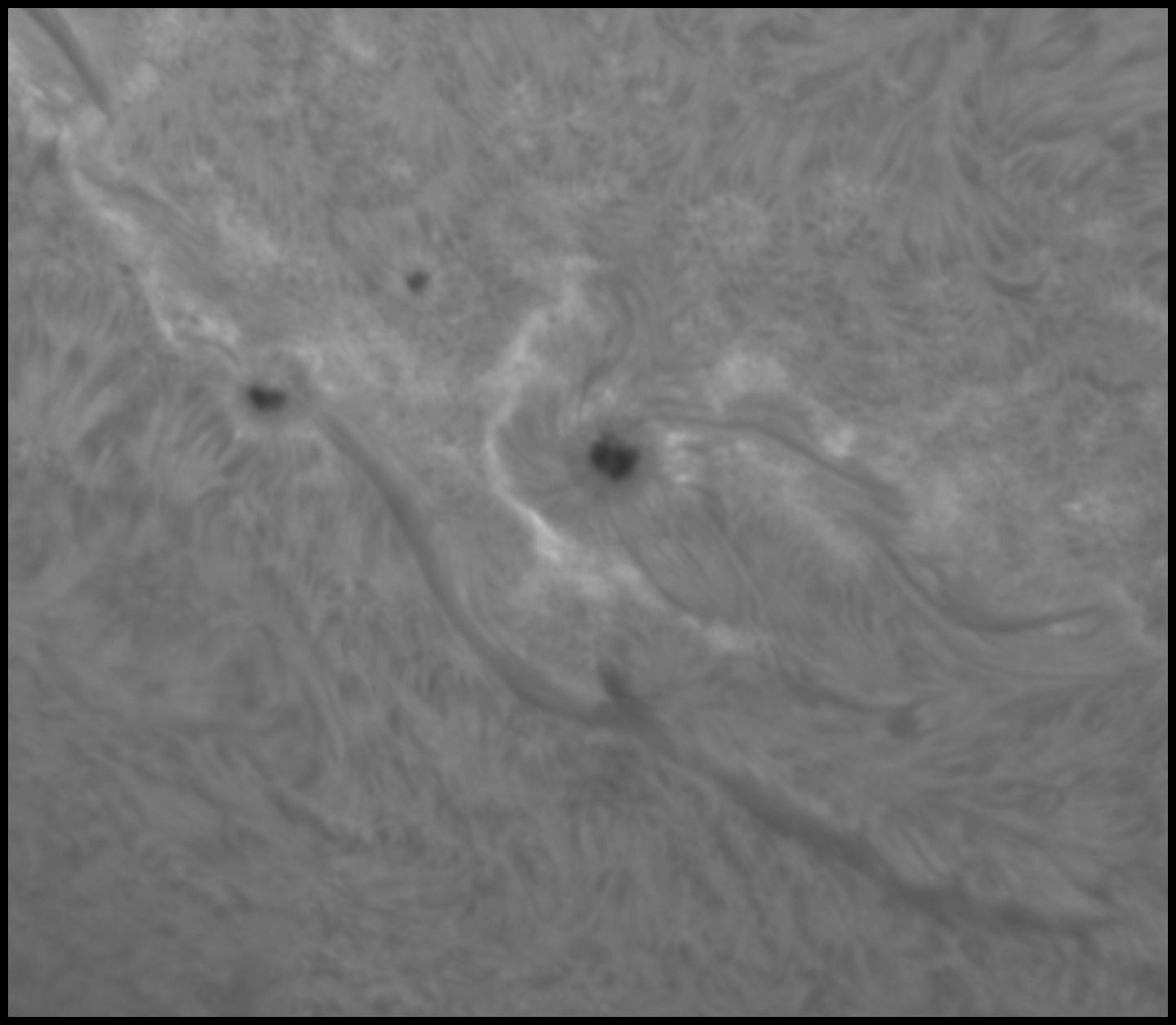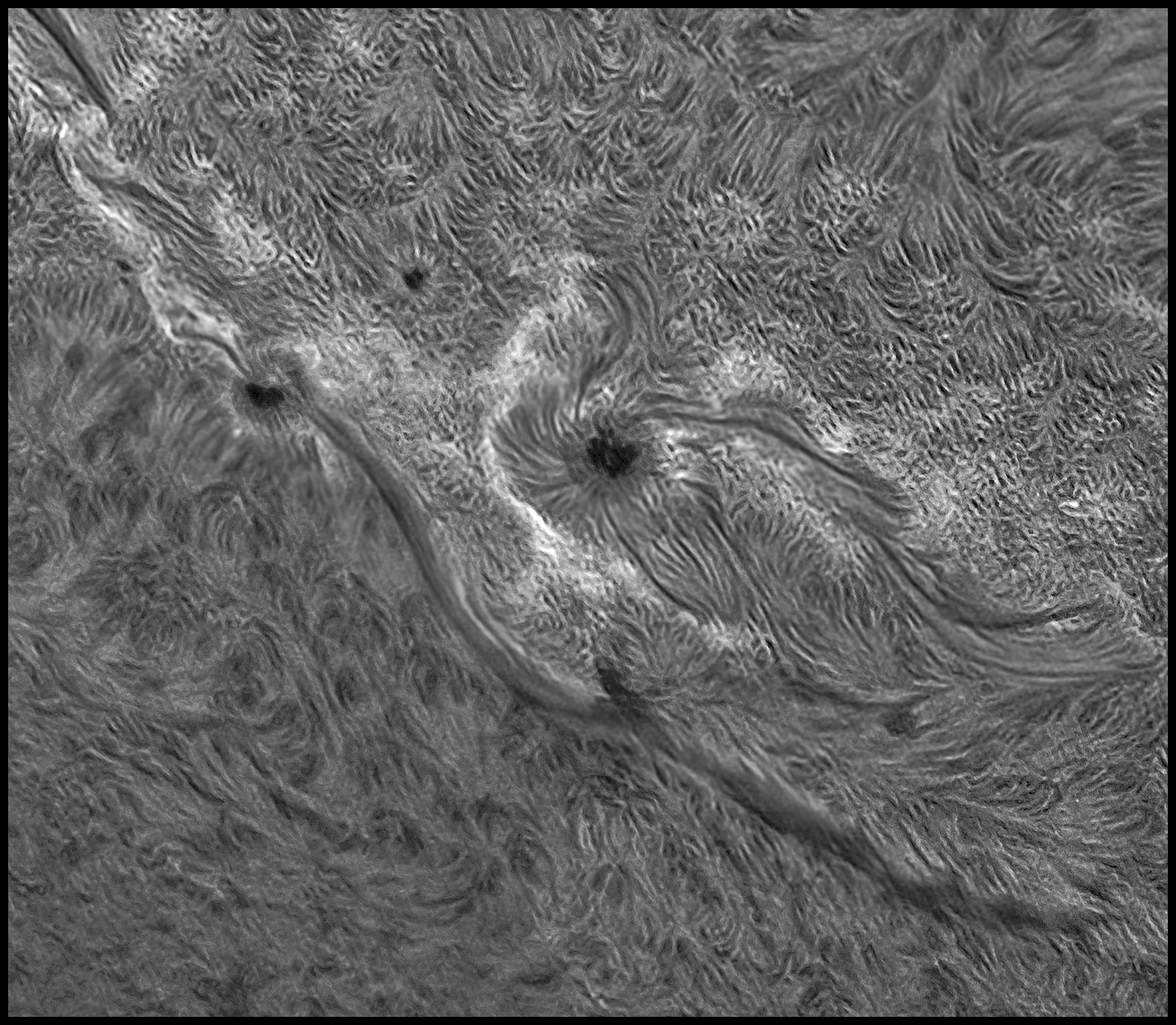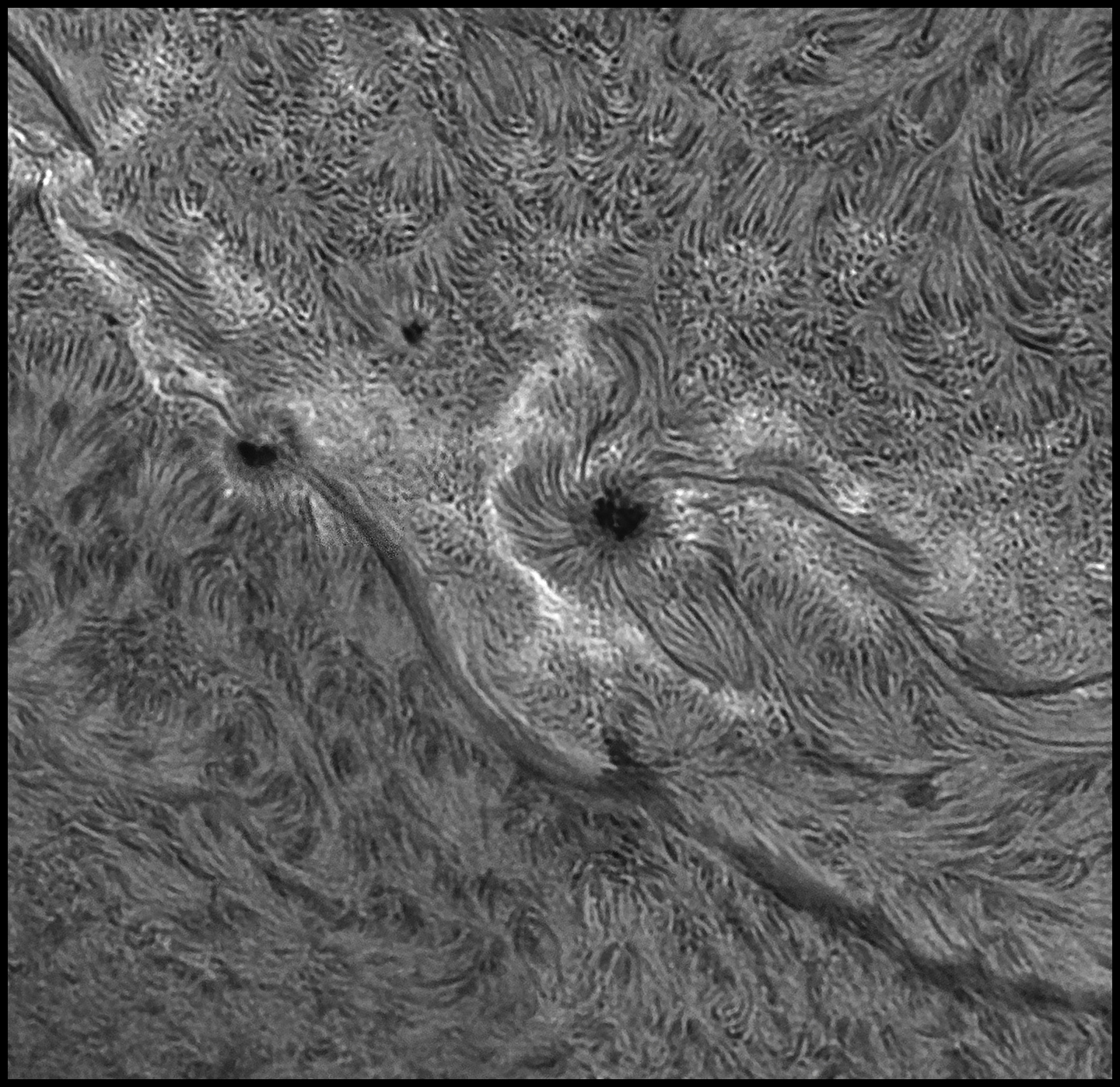Small Moves, part 2
9/18/2024. Still at it. I was pretty happy with a 4-part panorama processed the old way (aggressive sharpening in ImPPG followed by smaller adjustments in Photoshop). Earlier effort to produce this 4x panorama are shown on page 142 in the menu above. I'm less thrilled with the original processing job now, less than two weeks later.
I returned to the original, unmodified stacks (300 of 3,000 frames each) and started again. Here's the mosaic built from the unprocessed stacks and the result of reprocessing a new mosaic with the "small moves" rubric in mind:

Before and after processing. AS!4 stack at top. Newly processed image below.
Make it big.
The 4x pan is something like 6800 pixels wide, so neither the thumbnail of the before and after pair shown above nor the higher rez image you get by clicking really tells the tale. Below is a closer crop of some of the busier bits. These cropped pix are clickable, too, and the enlarged versions approach half scale compared to the full-resolution available in the data.

Stacked in AS!4

Processed via "small moves" as described below. It still seems a little "ropey" but less so than before.
For comparison, here's the same region from the same data extracted from the prior effort which was processed using ImPPG (in particular) with a heavier hand:

Former process of the same region of the same stack.
Here's how the new process gets from A to B:
- Assemble images from AS!4 using Photoshop's Photomerge tool.
- Crop to remove uneven borders.
- Unaggressive L-R deconvolution in ImPPG (just a hair more after seeing fine detail begin to emerge)
- Open in Photoshop using Adobe RAW to lighten shadows and control highlights.
- Do a self-mask (invert, layer, blend mode softlight) to compress dynamic range and help flatten the field if needed.
- Stack two copies of the work in progress in Photoshop; use blend mode "multiply" and use curves on each layer to hold top and bottom ranges
- Re-examine using Adobe RAW and curves to improve extremes while retaining headroom
- Open in Pixinsight; apply BlurXterminator; experiment to find optimum PSF etc.
- Layer two copies and apply HiPass filter, try mode softlight first then more extreme modes; adjust opacity; see what works, and none of this step may make an appreciable difference, so feel free to forget it.
- Alternatively: Open in Photoshop; emboss, offset, try mode softlight first.
- Finish using contrast, sharpen, sharpen-edges, USM, levels, raw filter, and noise reduction.
Nothing to it, eh? I'm not sure it's realistic to expect to reduce all the "try it" steps into a single, reliable recipe. But we'll see. Practice, Mister. Practice.
09/22/2024. I was straightening up the porch when it occurred to me that I might be using too few frames in solar image stacks (yes, it does work that way). There's a balance to be struck between selecting only the sharpest frames to defeat imperfect seeing and using plenty of frames to control noise. I may have been erring on the too-selective side. Here's an image built from the best 500 of 3,000 frames rather than my more typical best 200 out of 4,000 frames.That relatively small adjustment (16% rather than 5% of frames might not be so small) seems to have made a visible improvement. So now let's overdo it and see how THAT works. The best ratio will always be somewhat dependent on the stability of the air, but it's worth experimenting with a lot more frames.

More out of fewer rather than fewer out of more.
I bet it would scan well in Latin.
In other news, I've got a SVBONY UV/IR filter on the way to try in place of the 7nm Baader H-a. Based on recent experience (also detailed on page 142), I don't think it will work any better, but I suspect it will work about as well ahead of the Quark. The advantage is that I'll have a $25 filter at risk rather than a $200 filter. There may not be much risk in the concentrated flux behind the 92mm objective, but energy management will be a considerably bigger concern with more aperture. In the same order is a Bahtinov mask for the 400mm telephoto, but that's for the next installment over in the "Starry Night" section.
:: top ::